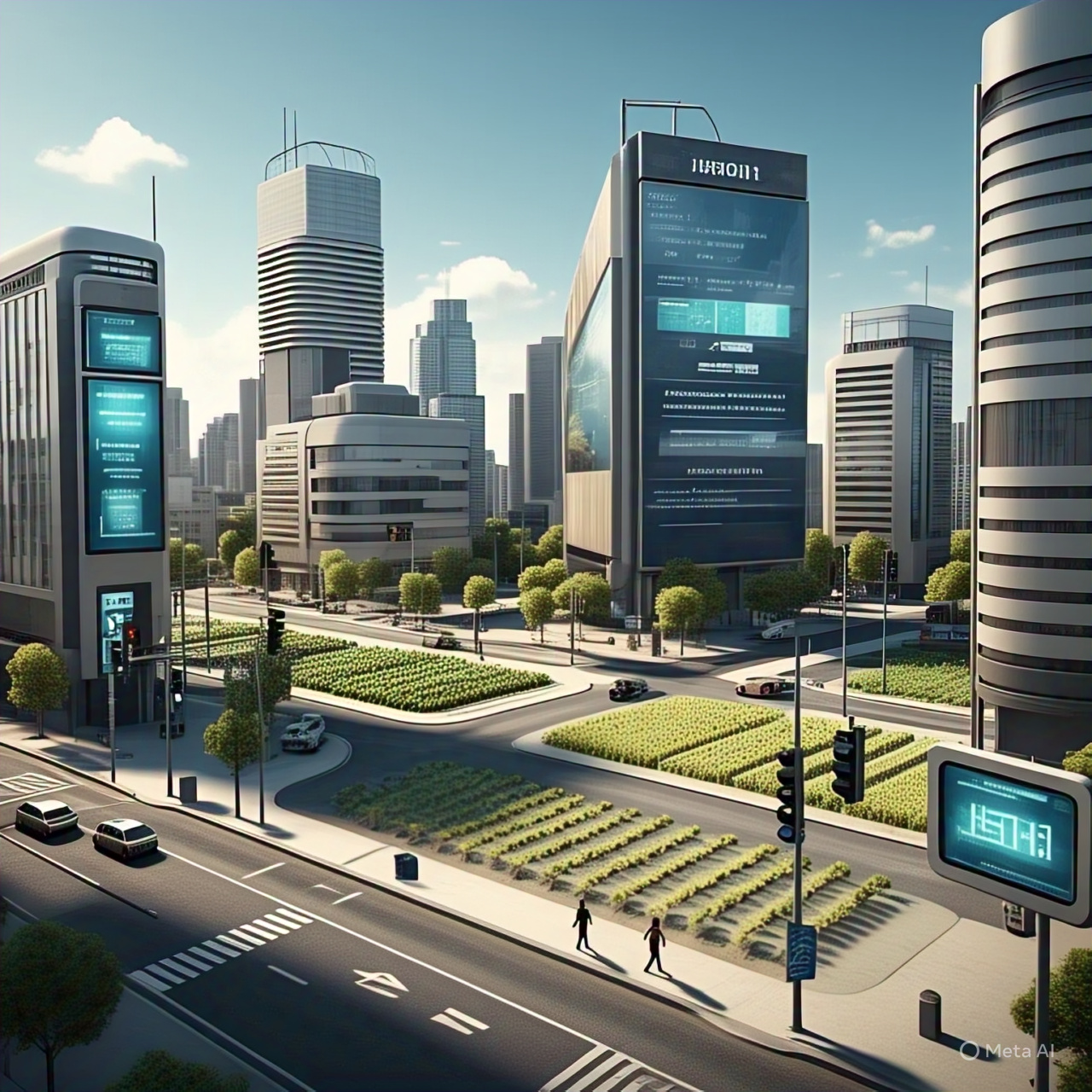Modern manufacturing processes are being rethought by Internet of Things (IoT) factory automation. Through the integration of smart sensors, interconnected devices, and advanced analytics, manufacturers are maximizing production, minimizing downtime, and improving safety across the entire supply chain.
Introductory Material Handling: What Is It?
-
Known as the “Internet of Things,” this system allows for the real-time collection and sharing of data via a network of interconnected devices.
-
When factories are automated using the Internet of Things (IoT), an intelligent manufacturing environment is created.
-
Automation runs smoothly with the help of sensors, gears, controls, and software.
-
A smart factory that runs as smoothly as possible with little human intervention is the final product.
How IoT Factory Automation Works
-
Sensors in factory automation systems collect data on motion, vibration, temperature, and pressure. This is how the Internet of Things (IoT) functions.
-
The cloud or devices at the edge receive the data and process it.
-
By analyzing data, analytics software may spot patterns, errors, and potential improvement areas.
-
Controllers for automated processes make decisions and adjustments in real time.
Internet of Things (IoT) Smart Sensors for Industrial Automation
-
Notice any changes in the temperature, motion, or operation that don’t add up.
-
Minimize time spent inspecting by hand and improve tracking in real-time.
Automated Logic Controllers (PLCs)
-
Respond to data collected by sensors and automate industrial operations.
-
Applied to the control of processes and machines.
Internet of Things Gateways for Industrial Use
-
Link Internet of Things networks to legacy machinery.
-
A digital signal may be converted from machine language.
Cloud and Edge Computing
-
The cloud enables worldwide access and data storage for the long term.
-
Edge computing allows for quicker and more localized decision-making.
The Use of AI and ML in IoT Factory Automation
-
Analyze massive datasets to foretell when maintenance will be needed.
-
Make better decisions and optimize processes.
Essential Internet of Things Applications in Industrial Automation
Predictive Maintenance
-
Sensors allow for the continuous monitoring of equipment status in real time.
-
To reduce unscheduled downtime, prepare ahead for maintenance needs.
Controlling Energy Use
-
Maintain tabs on and control the power consumption of every single unit.
-
Lower operational costs while increasing usage.
Quality Control
-
Find mistakes and anomalies in a flash.
-
Maximize product consistency while decreasing waste.
Supply Chain Observability
-
Raw ingredients and finished goods may be followed in real time.
-
Strengthen the management of inventories and logistics.
Monitoring from Afar
-
It is possible for operators to monitor production progress from anywhere.
-
Enables quicker decision-making with fewer site visits.
Boosted Efficiency: The Benefits of IoT-Powered Factory Automation
-
Having fewer interruptions allows equipment to operate continuously.
-
Jobs are mechanized so that delays and human error are eliminated.
Reduced Maintenance Needs
-
Predictive alerts ensure that repairs be made promptly in the event of problems.
-
Ongoing machine learning is used to increase uptime.
Decreased Running Costs
-
Automation may help cut down on energy and labor expenses.
-
Optimization of processes reduces material waste.
Heightened Safety
-
Internet of Things devices may detect potentially harmful circumstances in a flash.
-
Automatic shutdown protocols are put in place to prevent accidents.
Improvements to Product Caliber
-
Quality monitoring in real-time helps decrease defects.
-
Changes prompted by data provide better outcomes.
AI’s Function and Machine Learning
-
Augmenting IoT industrial automation, AI deciphers complex data patterns.
-
As time goes on, machine learning algorithms improve the system’s behavior.
-
Enables smarter decision-making and more adaptability.
Smart Factories in Action
-
Up-to-the-minute data analytics dashboards show how well machines are doing in real time.
-
Overall Equipment Effectiveness (OEE) and other key performance indicators become easier to monitor.
-
Enables rapid resolution of problems with the production line.
Environmental and Sustainability Effects
-
Monitor your carbon footprint by keeping tabs on your energy use in real time.
-
Reduce material waste by using automated quality checks.
-
Support green manufacturing by optimizing resource utilization.
An In-Depth Evaluation of Current Methods for Building a Smart Factory
-
Find the inefficiencies, safety risks, and downtime.
Make Sure You Have the Right Sensors and Tools
-
Match sensors with production needs and tools.
Join Existing Networks
-
Through IoT gateways, legacy equipment may be linked.
Get on the Cloud or Use Edge Computing
-
Consider your data processing needs, budget, and lag time before making a selection.
Develop and Launch Analytics Systems
-
Make advantage of alerts, dashboards, and key performance indicators for data analysis.
Cybersecurity Should Be a Top Priority
-
Safe networks that are protected by encryption and firewalls.
IoT Factory Automation Security Concerns
Threats
-
Hackers may access factory activity.
-
Devices gaining unauthorized access.
-
In the absence of device-level authentication, vulnerabilities occur.
-
Malware has the potential to halt crucial production processes.
Solutions
-
Complete encryption is one solution to security problems.
-
The transmission and storage of sensitive data are protected.
-
Verification with various elements prohibits unauthorized entry into control systems.
-
The firmware is updated often to resolve vulnerabilities.
-
Network segmentation stops the spread of assaults by isolating critical systems.

Web of Things (IoT) Automation Protocols
-
MQTT – a small protocol for real-time data exchange.
-
OPC UA – established norm for secure machine-to-machine communication.
-
Modbus Protocol – for usage in industrial environments to link equipment.
-
ZigBee and LoRaWAN – data transmission methods for low-power sensors that operate wirelessly.
-
Access to 5G Internet – permits the transfer of data at very high speeds with little delay.
Examples of IoT Factory Automation in Action 🏭
-
Siemens Smart Factory in Germany: Automation and real-time monitoring enabled by artificial intelligence. 75% improvement in the precision of predictive maintenance.
-
GE Appliances (USA): Internet of Things enabled manufacturing lines enhanced efficiency and ensured worker well-being.
-
Foxconn (China): Networked robots used for precise manufacturing, integrated with cloud analytics.
-
Bosch Global: Retrofitted old machinery using IoT sensors—significant decrease in machine downtime.
Improving Time to Market and Business Growth with IoT Factory Automation
-
Rapid adaptation to changes in production or blueprint.
Modularity and Individualization
-
Changing automated lines to suit different product models is a breeze.
Better Return on Investment
-
Lasting decreases in the costs of labor, materials, and energy.
Data-Driven Innovation
-
Apply findings for research and development and product improvement.
Adoption Obstacles
-
Expensive Beginning Cost – Systems, sensors, and training costs can be high.
-
Working with Outdated Tools – Older machines may need additional gateways.
-
Shortage of Skilled Workers – Skilled IoT technicians are in high demand.
-
Massive Data Volumes – Handling large quantities of machine data can be difficult.
Resolving Implementation Challenges
-
Take baby steps by launching a pilot program at one manufacturing site.
-
Work with Internet of Things (IoT) consultants or system integrators.
-
Provide personnel with opportunities to learn online.
-
Use cloud platforms to manage data in a scalable way.
Paths Ahead: Future Trends in IoT Factory Automation
Digital Twins
-
Digital models of physical systems allow for simulation and testing.
Collaborative Robots (Cabot’s)
-
Work safely beside humans.
Integration of 5G
-
Real-time remote control with high-speed connectivity.
Sustainable Manufacturing
-
Optimizing resources and energy with IoT factory automation.
The AI Frontier
-
Instantaneous decisions enabled by local data processing.
Platforms for IoT Factory Automation
-
AWS IoT Greengrass – Edge computing and machine learning.
-
Azure Web Connectivity Platform – Secure device management and data integration.
-
Google Cloud IoT Core – Scalable infrastructure for global operations.
-
Siemens Mindshare – Tailored for automated manufacturing.
-
Thing Worx, INC. – Rapid integration and deployment with manufacturing systems.
Expert Advice for Factory Owners 🏎
-
Maintaining a regular audit schedule can help you identify areas that might need improvement.
-
Immediately priorities’ cybersecurity.
-
Evaluate plant performance using key performance indicators in real-time.
-
Work with companies that provide IoT solutions to speed up adoption.
-
Inspire a culture of innovation and continuous improvement.
Learning Resources for IoT Factory Automation
Books
-
“Designing Connected Products” by Claire Rowland
-
“Smart Manufacturing: The Lean Automation Playbook” by Anthony Tarantino
Online Courses
-
Industrial Internet of Things on Coursera
-
Embedded Systems and IoT (edX)
-
Control and Automation on Udemy
Communities
-
Reddit’s r/industrial automation
-
LinkedIn IoT and Automation Groups
-
International IoT Conferences
Last Thoughts
For manufacturers looking to boost production, save costs, and attain operational excellence, Internet of Things (IoT) factory automation is quickly becoming more than just a trend.
Companies who have embraced IoT factory automation have outperformed rivals by increasing product quality, speed, and sustainability.
As technology evolves, automation and AI will become more widespread across all industries.
Investing in IoT factory automation is a step toward the future of modern manufacturing.




